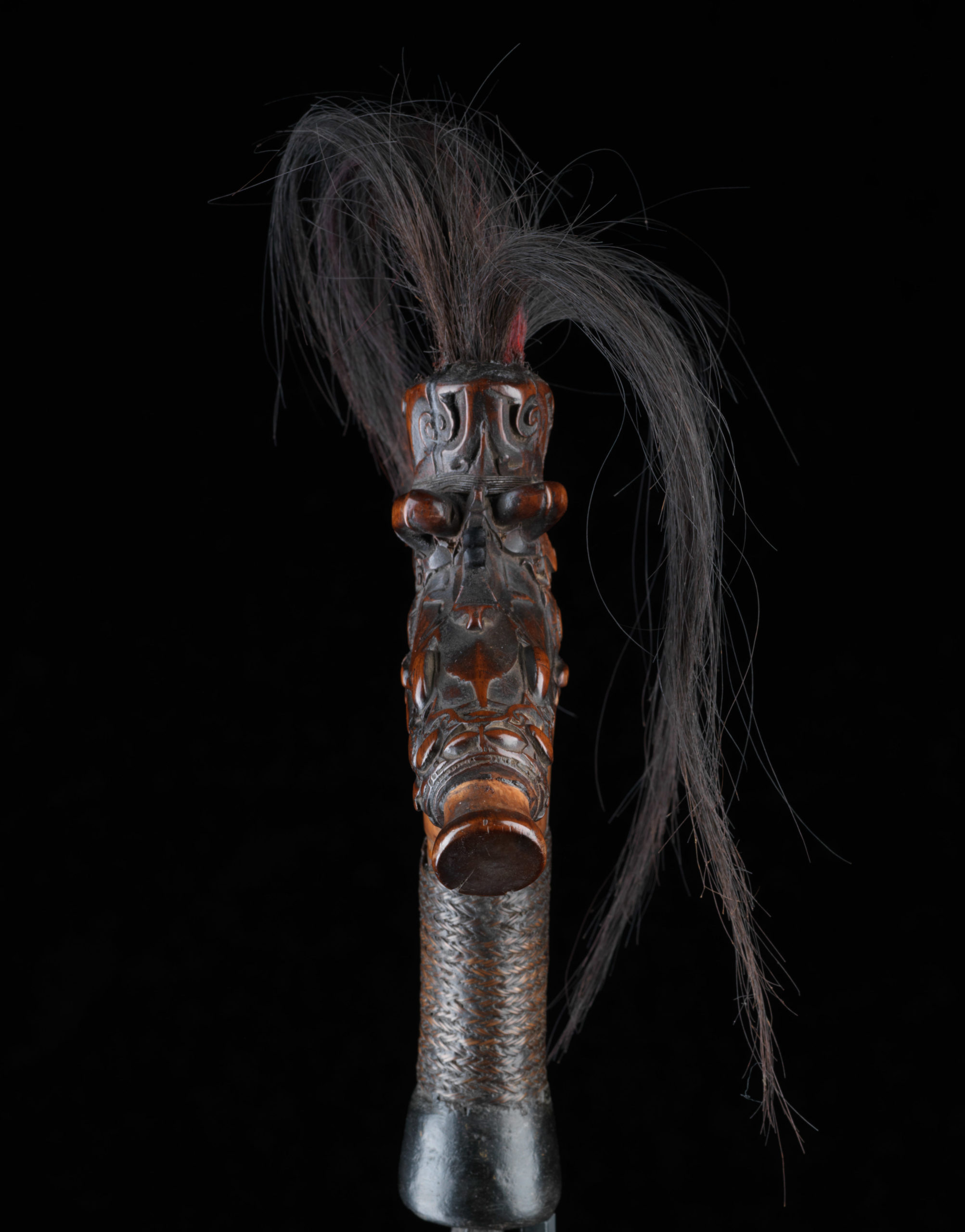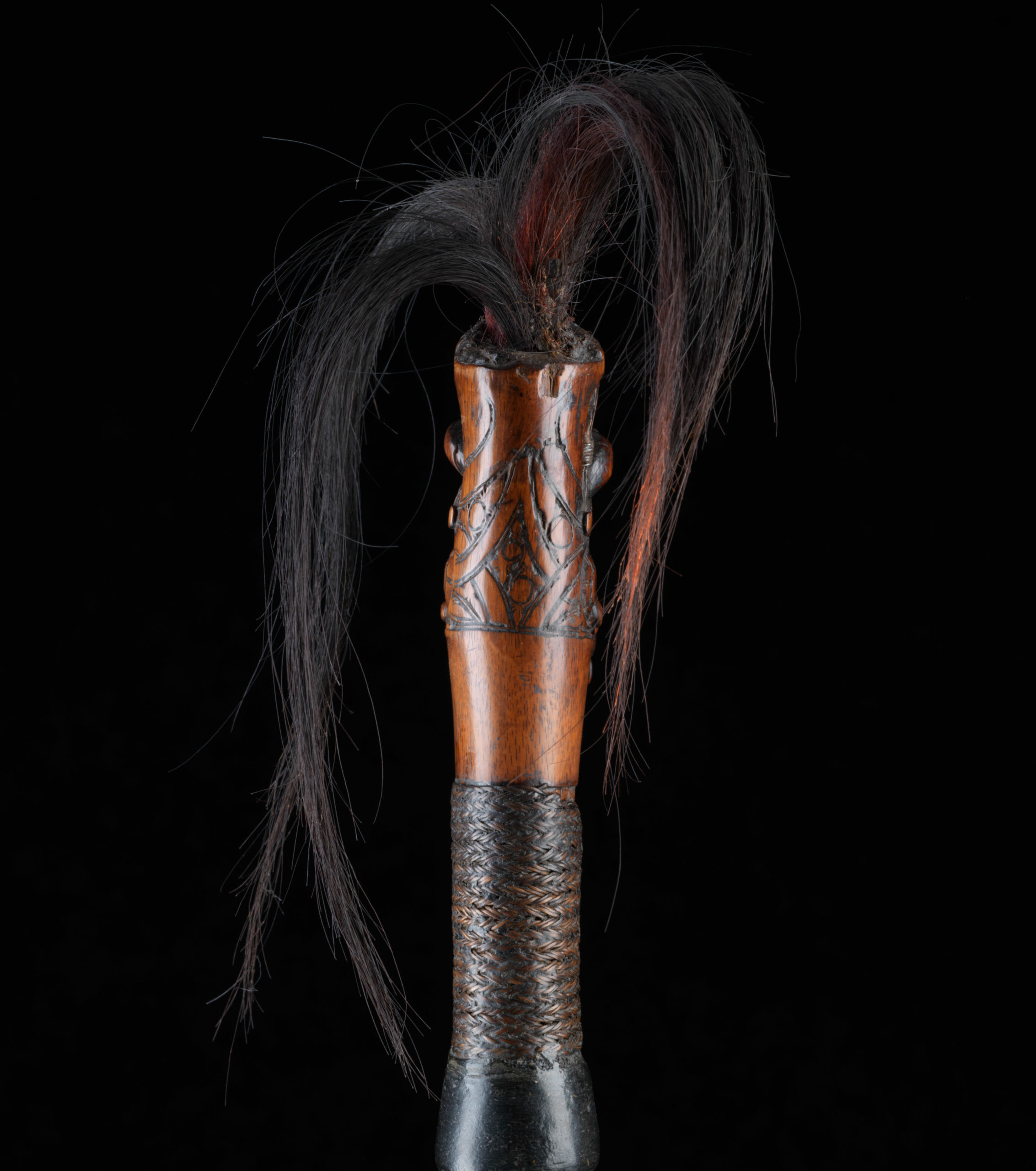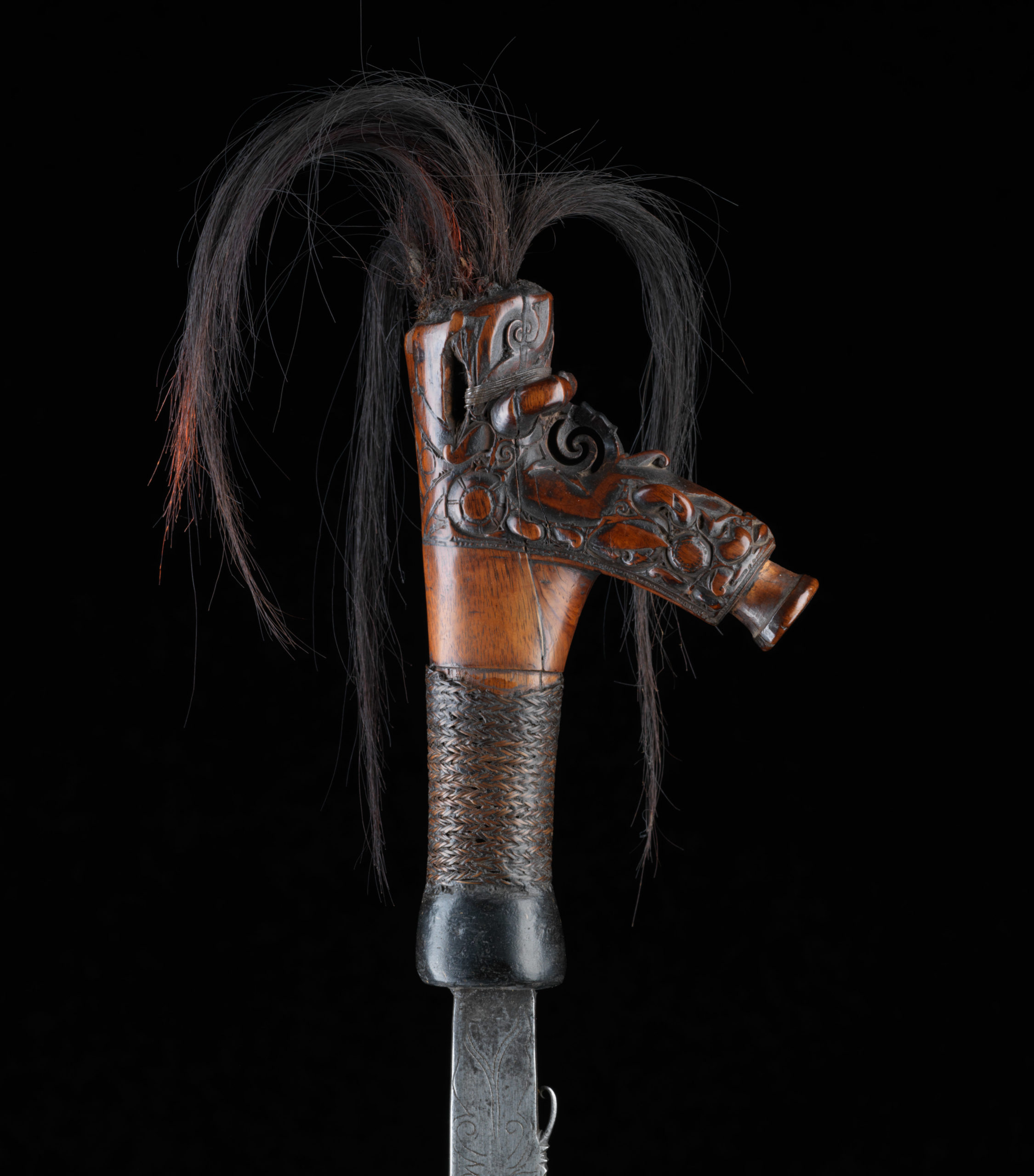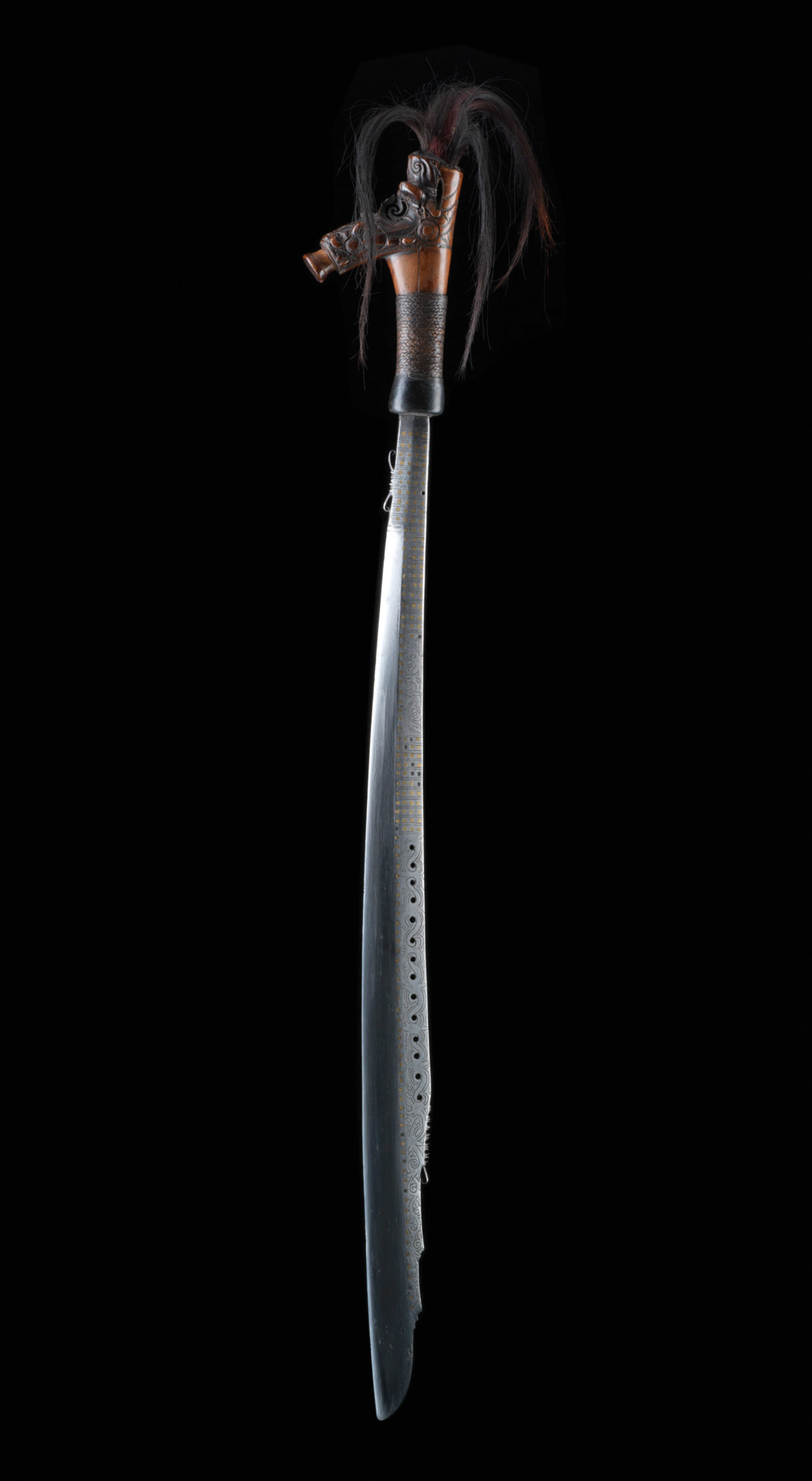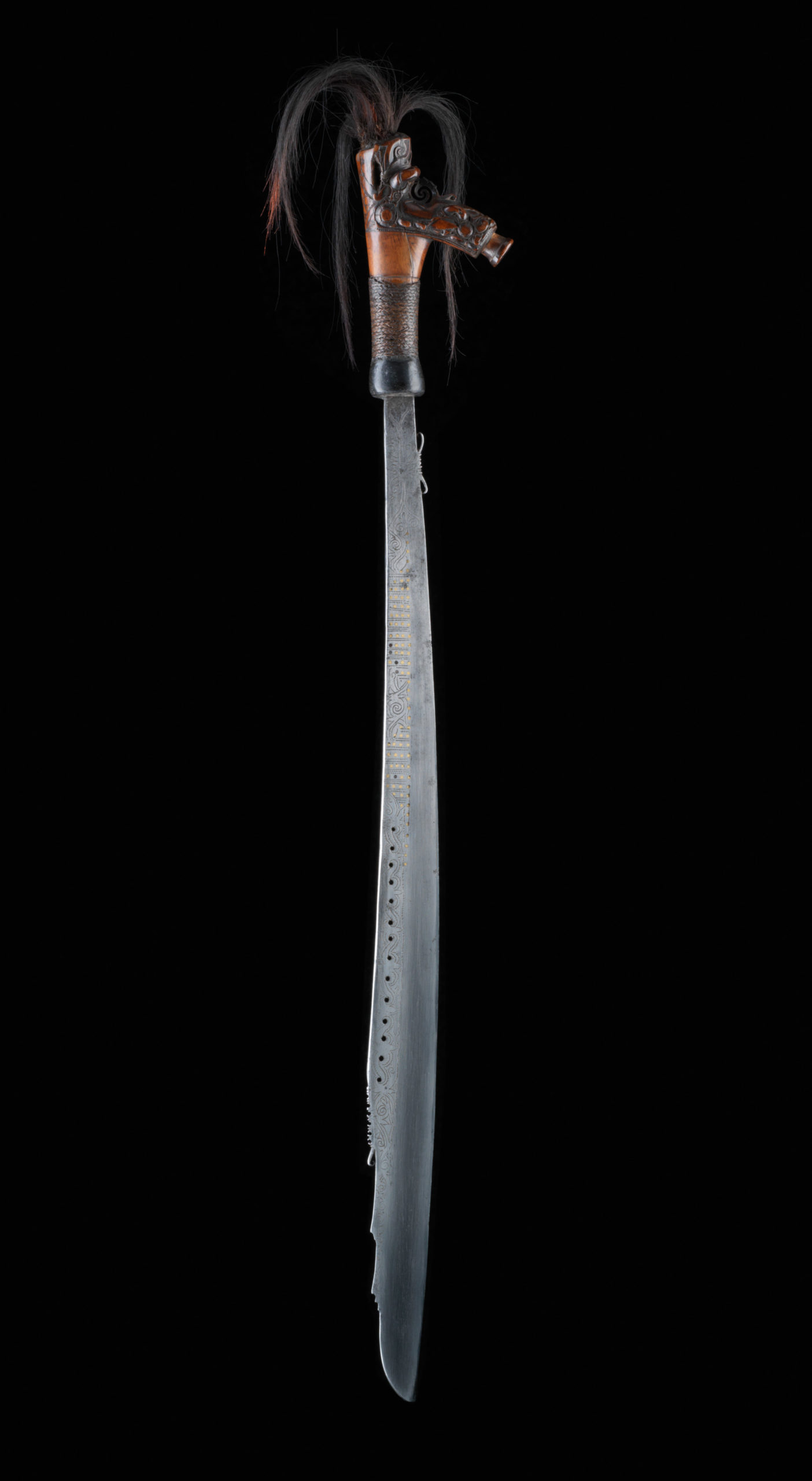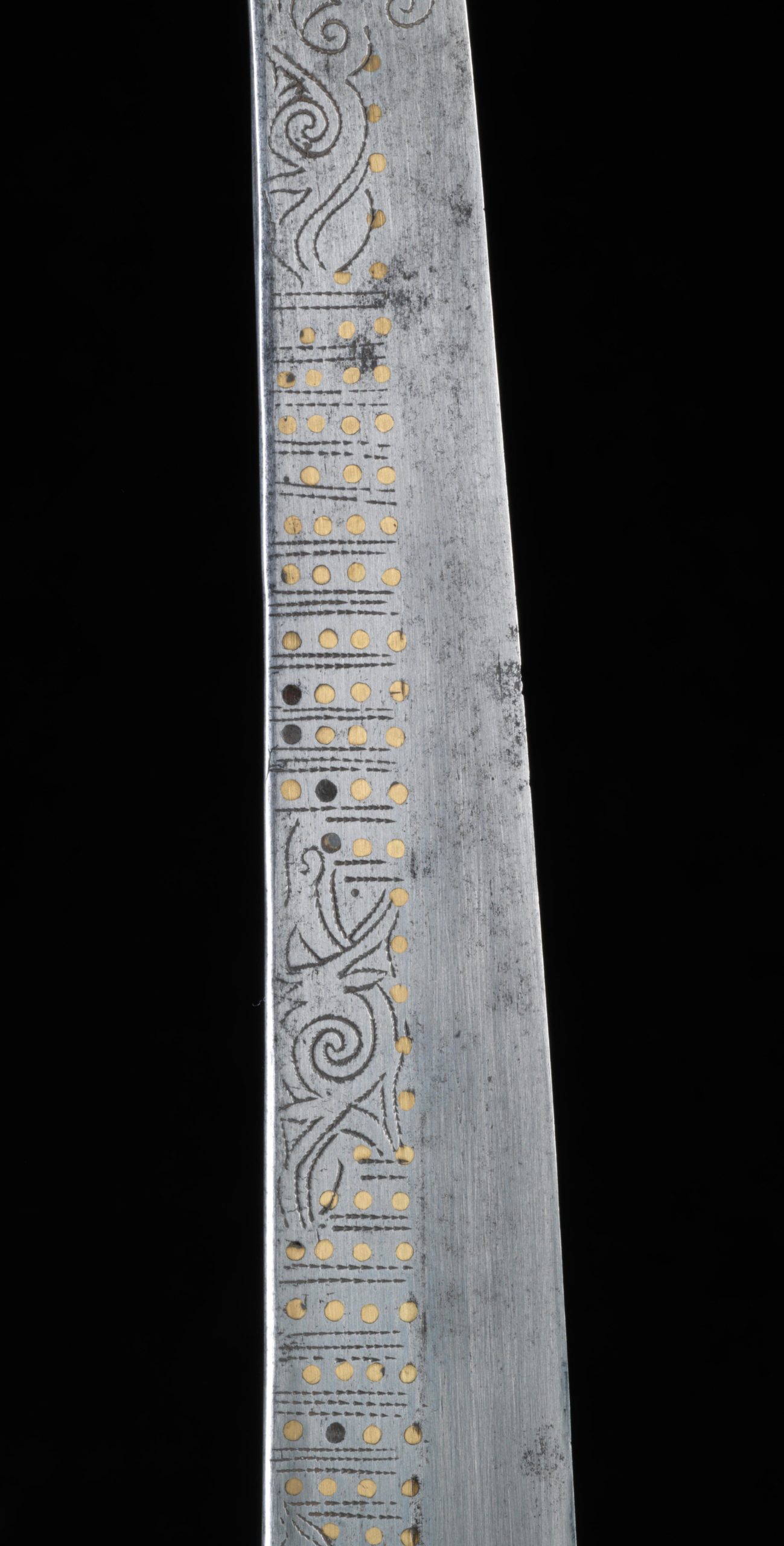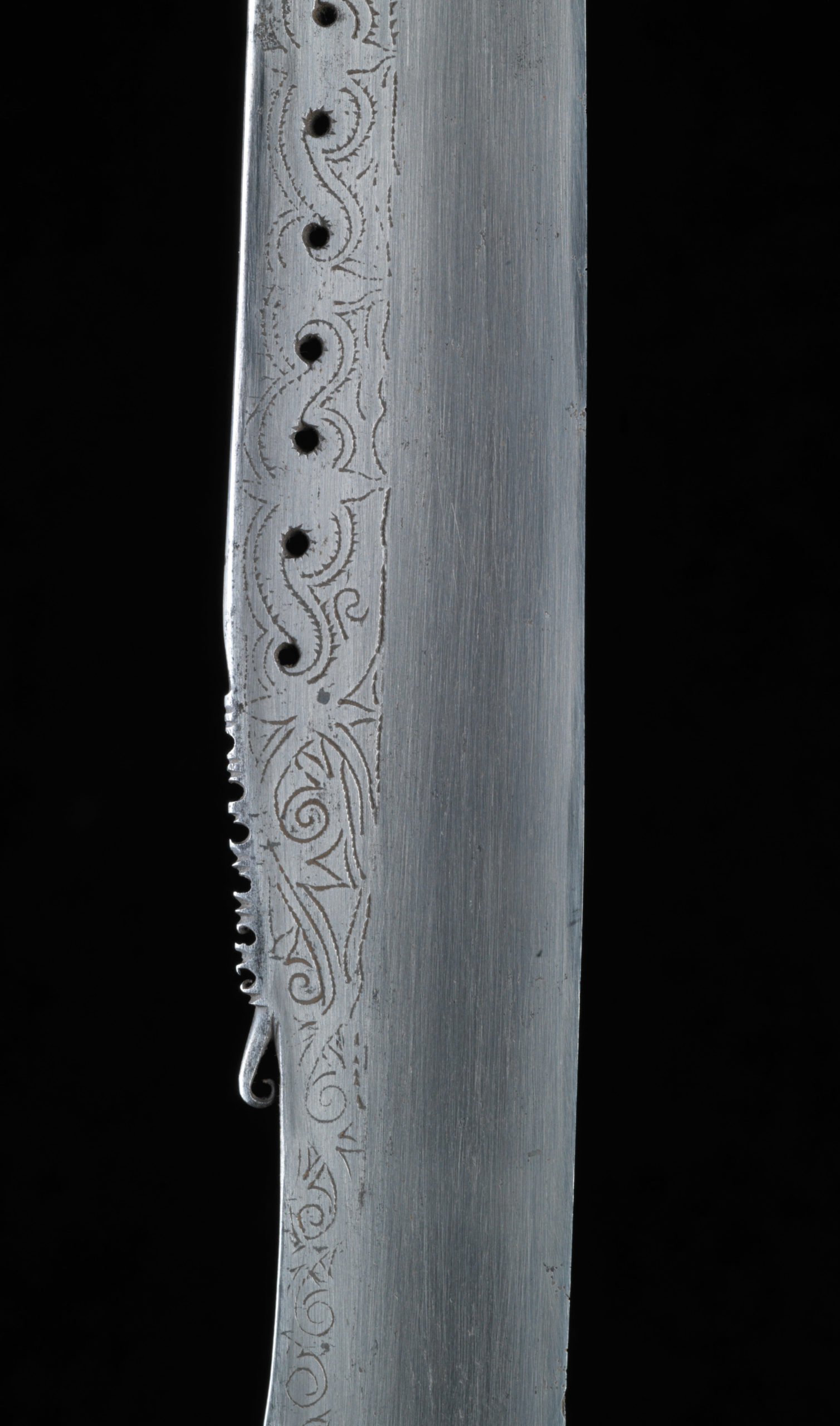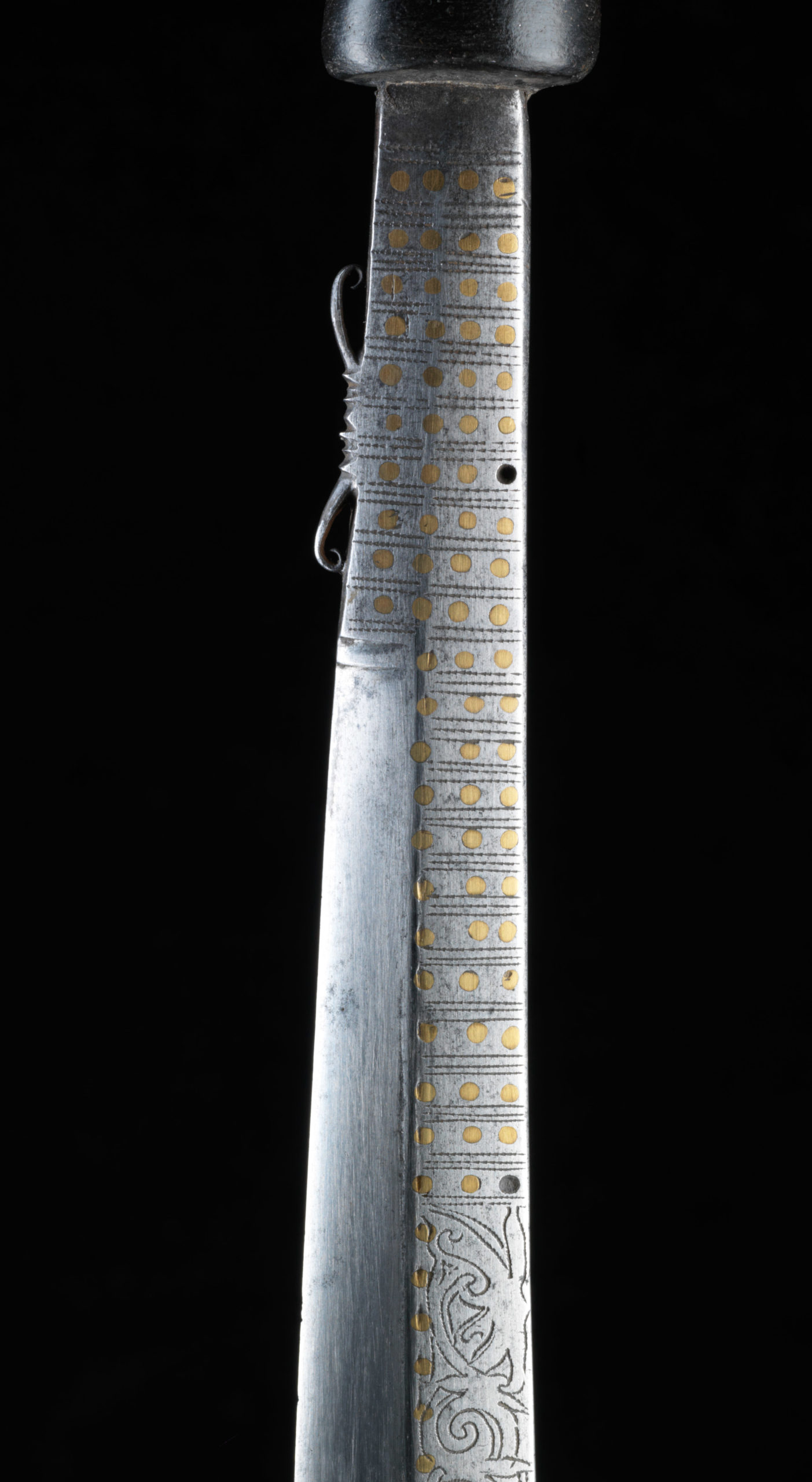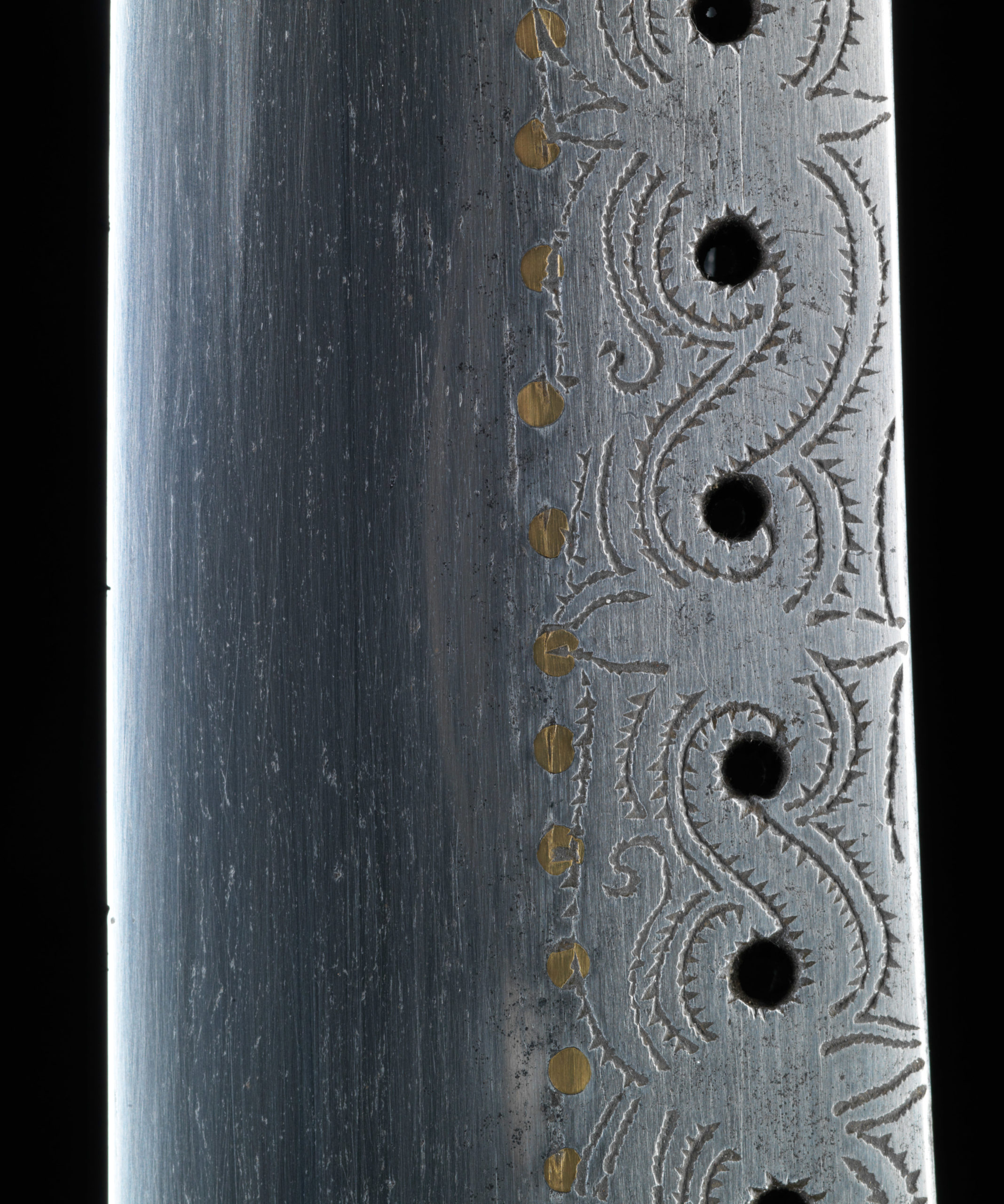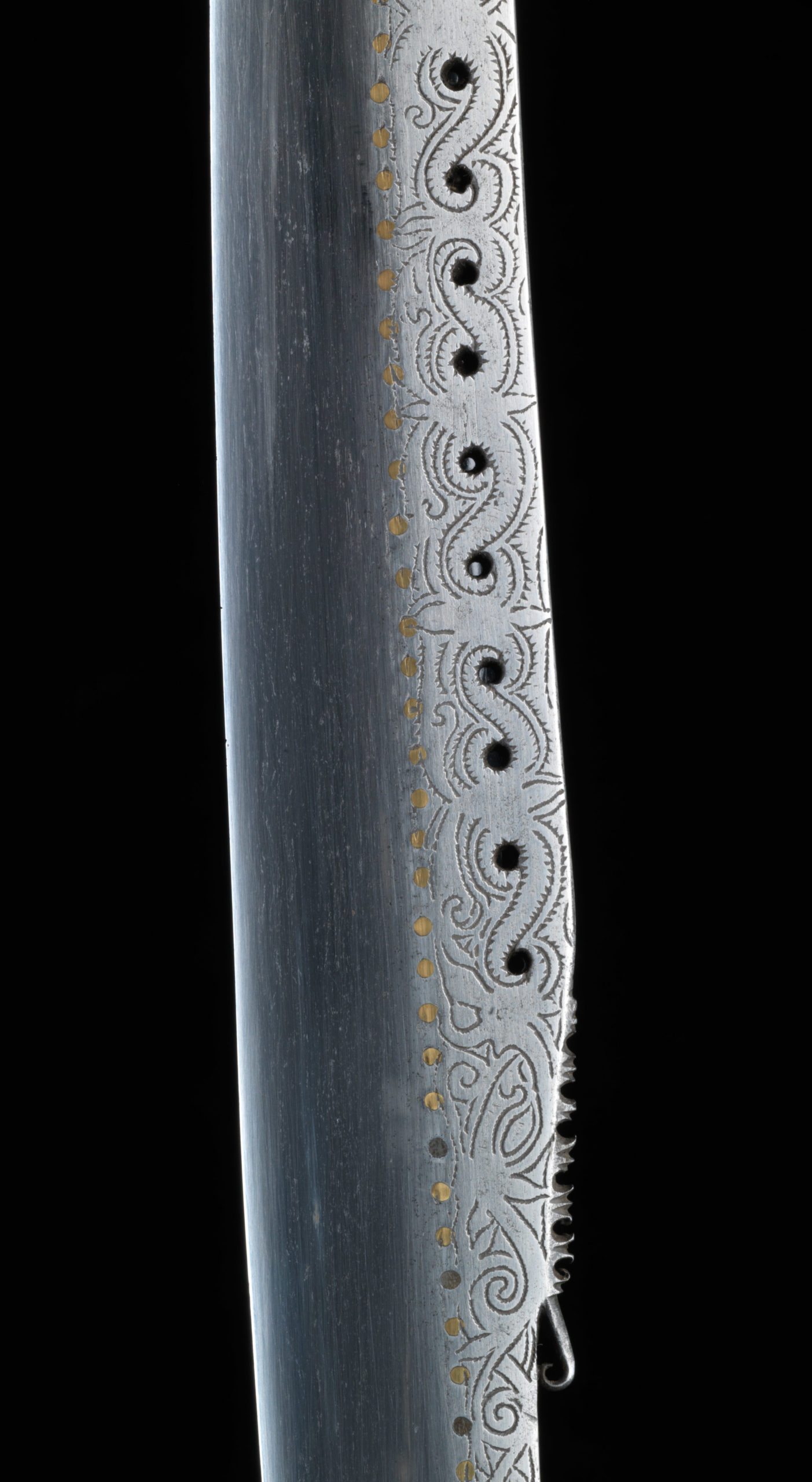Mandau
| Object | Mandau “parang ilang”, “malat”, “baieng” |
| Culture | Borneo, Kalimantan oder Sarawak, Dayak, Kenyah- |
| Time | Late 19th century |
| Dimensions | Length 73 cm |
| Material | Steel, soft metal, wood, rattan, human hair |
This is a typical example of a mandau or baieng from the Kenyah region. The blades of the Kenyah-mandau are usually longer and often heavier than those of the kayan, and the explicitly one-sided grinding of the kayan-mandau is not necessarily given. The blade shows a high degree of elaborateness in terms of decorative forms. Blades of this type are called usang bilah (“smooth blade”). Blades with pierced chisel work, which entails additional technical difficulties, are called usong ikang. The variant with mata kalong double dragon at the base is called usong betong, but this motif does not occur on Kenyah blades, but is a speciality of the kajan. The blade of the present piece is characterised by a very good degree of preservation or professional restoration. The steel is pre-industrially produced (early to mid-19th century) and has a fine texture with a subtle shadow of hardness in the front cutting edge area. The blade is punched with running S-lines (for Kajan: matajoh), in between there are fields with inserted brass pins. In some areas, the punched decorative motifs, which were cold-hammered in with a fine chisel, are pronounced as transitional forms between aso and matajoh forms. They have a sexual connotation; the decorative forms on mandau blades are associated with both female and male sexual organs, as comparisons with house panels show (Nieuwenhuis). The blade is sharpened on one side and is considered to be of very high quality.
The handle, which is cut from dark, very hard wood, is an example of the pictorial programme of mandau handles. It is relatively rare that such a high-quality handle is made of wood. The handle is braided with fine multicoloured rattan. The main branch of the handle, which embodies the aso, is decorated with very fine suspended spirals and stylised skull motifs as well as leeches (lematak), which in this constellation symbolises head hunting per se as a requirement of the aso, the dragon of the underworld. The upper part or grip crown can be recognised as a very stylised anthropomorphic figure, recognisable by the two “arms”. Instead of the face, spirals are applied again. At the transition to the main aso, a very elegant spiral is carved into the central motif, representing the path of the initiator and warrior and his direct influence on the path of souls to the afterlife (and back). Thus, before the initiator lies his path to the aso, the Lord of the Underworld, which can also be seen as personalised fertility. The principle corresponds to that of the Eleusinian mysteries and the Orpheus myth.
Ultimately, kajau or headhunting ties in with the elevation of the status of the deified ancestors in the hereafter, who have passed the journey to the underworld and whose astral forms of existence are always determined by the work of the living descendants, since the world beyond is a mirror image, an idealised image of this world. The sword is therefore a unification of the dayak cosmology in a very small space.
Supplementing Literature Back to room view




